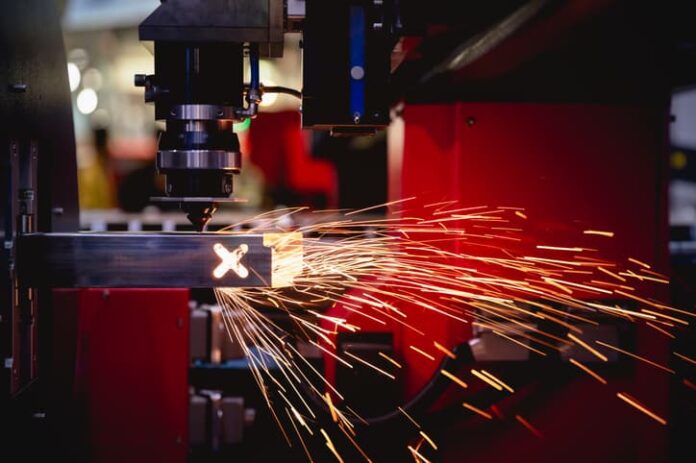Metals are commonly marked with barcodes, serial numbers, and logos with both CO2 and fiber lasers.
Fiber lasers are ideal for industrial marking applications due to their long lifespan, low maintenance needs, and relatively low cost. This type of laser produces high-contrast, permanent ink that does not fade.
PRIOR to engraving, metal (or pastes) must be treated with CO2 lasers. Permanent marks are created with CO2 lasers as metals are bonded to heat. In addition to being affordable and fast, CO2 lasers can also mark wood, acrylic, and natural stone.
Epilog laser systems can be operated by almost any Windows-based operating system.
Different types of lasers
There are some considerations to keep in mind because lasers have different effects on different materials.
Metal marking agents must be pretreated or coated before CO2 lasers can mark them, thus it takes longer for CO2 lasers to mark metals. For the marking agent to bond with the metal, it must also be powerful with low speed. If the laser mark can be easily wiped off after lasering, the piece should be run at a lower speed and higher power.
Using CO2 lasers, metals can be marked without removing material, guaranteeing their strength and tolerance are preserved. Anodized aluminum and painted brass require no pretreatment.
Using fibre lasers is the best way to engrave metals. Among the surfaces that can be marked with laser beams are aluminum, brass, copper, nickel-plated metals, and stainless steel.
Certain materials, including transparent ones, will not be marked by laser wavelengths; the laser beam, for example, can pass through materials and leave marks on engraving tables. However, fiber laser systems are not recommended for use on wood or clear glass because they are capable of marking organic materials. For more information, visit lasitlaser.pl.
Types of marks
Fibre Laser marking on metal can be carried out several ways, depending on the material that needs to be marked. When materials are engraved with a laser, they are vaporized. Marks are often shaped like cones since the beam is shaped like one. The engraving becomes deeper and lasts longer as the system cycles back and forth.
Usually, ablation exposes the underneath layer of the skin. Metal powders and anodized metals are both amenable to being ablated.
In addition to marking an object’s surface, it is also possible to heat it. An annealed metal leaves a high-contrast mark when a layer of oxide forms over it at high temperatures. Melting materials are characterized by the formation of gas bubbles that become trapped as the substance cools and create the bubbled effect. The process of polishing involves the rapid heating of metal surfaces to reverse their colors. It produces a finish that looks like a mirror. Anodizing is used on steel alloys, iron, and titanium, as well as other metals containing carbon or oxides. Foam can be used on plastic or stainless steel, but it is usually used on plastic. Matte finishes are the best for darker colors, but there are no metals that cannot be polished.
Factors to consider
In addition to laser marking, stainless steel can be etched, polished, or annealed at different laser parameters, such as speed, power, and frequency. In comparison with CO2 lasers, fiber lasers are often much brighter with anodized aluminum. Rather than engraving black on aluminum, it engraves gray on aluminum. Aside from oxidation and coloring, aluminum can also be deep etched.
It can mark titanium in a variety of colours when it uses the laser. Marks of different colors can be produced, however, by adjusting the frequency.
A win-win situation
Due to their flexibility and capabilities, dual-source systems are a good choice for companies with limited budgets or space. This method has the drawback of being ineffective when one side is used.
Black, white, and grey marks on anodized aluminum
Different marking effects can be achieved when aluminum’s color or material is removed. Using a laser, the anodized layers can be removed partially or completely.
To protect the anodized aluminum surface, a ceramic layer (5-30 m thick) is applied. Decorative effects can be achieved by coloring the porous layer. Different laser wavelengths can also achieve different results (and the removal of different materials). Machine-building, for instance, frequently involves the use of anodized aluminum. Screws, covers, and other parts are found in the Housings and Covers section.


